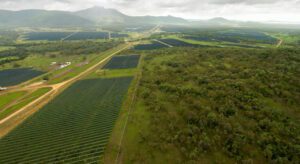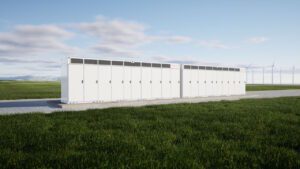Australia’s energy crisis has claimed another scalp, with solar and battery virtual power plant focused retailer Social Energy entering voluntary administration, and its customers entering the Retailer of Last Resort (RoLR) process.
A notice published by the Australian Energy Regulator on Wednesday says Social Energy, which launched in Australia in late 2020 with the high profile backing of the late cricketing legend Shane Warne, was placed under administration on August 19.
The notice says Social Energy’s authorisation to trade ends on August 25, triggering the regulator’s authority to shift its 280 customers across New South Wales, Queensland, and South Australia to an appointed retailer – most likely Origin Energy or EnergyAustralia.
Social Energy becomes the sixth electricity retailer to fail since May, as a period of surging wholesale electricity prices catches a growing number of retailers unprepared and unprotected by sufficient hedging contracts.
The UK-founded company started retailing in Australia in November 2020, carrying over its promises of a high solar feed-in tariff and “cutting-edge” virtual power plant technology that optimises solar and battery performance to minimise bills.
Social Energy offered Australian customers a choice between either a Duracell or a SolaX home battery, with scalable capacities of between 5kWh to 17.4kWh, which would be connected to the company’s proprietary AI platform Social Energy Hub.
In return for access to the solar stored in these batteries – which Social energy used to trade on the wholesale markets as well as on the FCAS (frequency control ancillary services) market – customers were offered a minimum annual payment – or “top up” – relative to the battery size.
In November 2020, Social Energy put the cost of installing the whole kit – solar, battery, smart energy management platform – at around $12,000 for a 6.6kWp tier 1 solar system and an 11.6kWh SolaX battery system, connected with the Social Energy Hub.
The company also said that a customer with a 9.6kWh battery system, or larger, could expect to get a minimum annual “top up” payment of around $450 a year for VPP services.
At the time of publication, RenewEconomy could not find any public statements or notices from Social Energy explaining the decision to exit the Australian retail market, but letters have been sent to customers from the company’s administrators, Grant Thornton.
One such letter, shared with RenewEconomy, says Social Energy customers who have paid a deposit or are awaiting installation of Social Energy products should expect the administrators to “be in touch … to discuss your position in due course.”
An AER fact sheet answers a range of other questions Social Energy customers might have, here.
In the UK, which is having its own fossil fuelled energy market crisis, the original Social Energy has suffered a similar fate, with the retail part of the business there closing to business in November of 2021.
According to a press release at the time, Social Energy has more than 7,100 solar battery customers in the UK and was the energy retailer to 5,600 of that number – all of which were reallocated to new retailers via a similar Supplier of Last Resort (SoLR) process.
In the UK, however, Social Energy is keeping up its VPP “battery optimisation” business, and the company took the time to explain why it was exiting the retail market – a message that could easily apply to the Australian business, too.
“It’s an extremely difficult time in the UK energy market right now, where we’re seeing many of our innovative peers forced to leave the sector altogether, with an unprecedented inability to sell energy at a profit,” said Social Energy CEO Richard Smith.
“We are very grateful to be in a position whereby our business can continue to successfully operate without an energy supply business and to keep offering savings to customers new and old.
“We have an outstanding team at Social Energy, who will now be focused on reworking our business proposition, to support our customers and preparing to scale our smart solar battery sales in 2022, as homeowners look for better ways to power their homes.”








